

Volume 91
Published on October 2024Volume title: Proceedings of the 2nd International Conference on Functional Materials and Civil Engineering
The energy problem has become the main factor restricting the sustainable development of society and protecting the ecological environment. China’s vast territory, changeable climate and environment increase the difficulty of building energy conservation and emission reduction, and restrict China’s sustainable development strategy. It is urgent to reduce building energy consumption and improve energy utilization. The external wall insulation can effectively reduce the energy consumption of buildings. Through the analysis of the current situation of civil building wall insulation and energy-saving system, it is found that there are many problems in the construction, management and material application of external wall insulation; According to the concept of energy conservation, environmental protection and sustainable development, this paper puts forward countermeasures, hoping to have a certain reference significance for the external wall insulation construction of other similar projects.

 View pdf
View pdf


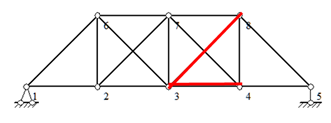
A truss is a common structure in structural engineering, but it will inevitably be damaged when used. It is necessary to establish a reasonable and accurate structural damage identification method to effectively detect the damage and ensure the safe state of the structure. This paper uses a Monte Carlo sampling algorithm for modeling programming based on Bayesian theory for damage identification of statically indeterminate truss structures. By comparing different loading schemes and monitoring node measurement schemes, this paper derives the law of truss optimization. It obtains the optimal posterior distribution of damaged members to find the optimal identification scheme. In addition, using the displacement calculation formula of the truss, this paper gives the optimization direction of the damage identification monitoring scheme. The results show that when the axial force of the damaged member is larger than that of other members, the updating effect of the damaged member is better . And the feasibility of the method is verified by using the actual displacement value and damage value. The method proposed in this paper can effectively update the damage values of bars using known displacement information. However, the method in this paper also has the deficiency of not considering the iterative use of data, and it needs to be improved with the idea of combining the information.

 View pdf
View pdf


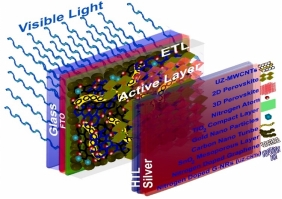
With the escalating environmental pressures, the multifaceted characteristics of 3D materials in terms of energy utilization and stability have attracted widespread attention. This paper employs literature research, surveys, and descriptive research methods to discuss how 3D composite nanomaterials promote further innovation in new solar cells and their application in practical situations. The article mainly focuses on 2D/3D perovskite solar cells, multi-walled carbon nanomaterials, and three-dimensional ordered macroporous materials (3DOM) and deeply explores their roles in various battery frameworks. The research finds that the incorporation of 3D composite nanomaterials has promoted progress in solar cells in terms of conversion efficiency and high transmission speed, but there are still great challenges in terms of popularization and stability. It also emphasizes their far-reaching impact on promoting sustainable energy development. This paper not only provides insights into cutting-edge research but also highlights the profound impact that the development of 3D nanomaterials has on advancing sustainable energy development options. Unlocking the full potential of three-dimensional nanomaterials through interdisciplinary cooperation holds great promise for solving energy problems and creating new fields.

 View pdf
View pdf


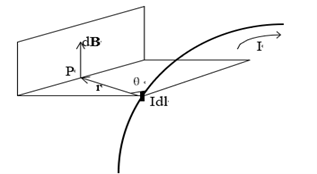
In the era of interconnected devices, as the intelligence of equipment deepens, human-computer interaction models are continually evolving. People are no longer satisfied with traditional pen-and-paper methods and seek ways to take notes that can be saved and accessed in the cloud at any time. Among smart writing devices, smart pens are critical components. Most current smart pens utilize infrared cameras to capture high-frequency images, recording the coordinates of strokes as they traverse specific coded points. This positioning method requires special paper and has drawbacks such as high costs and low sensitivity. Addressing the shortcomings of common positioning methods, this paper proposes a magnetic positioning method. By establishing an array of magnetic sensors, it aims to achieve precise tracking of the smart pen's tip. The paper first explores the basic magnetic field theory of permanent magnets and introduces the fundamental theory of magnetic dipoles, followed by a discussion on classical magnetic positioning theory. Additionally, the paper analyzes the sources of error in magnetic sensors. Finally, it describes the use of MATLAB to design an app for the real-time calculation and display of handwriting.

 View pdf
View pdf


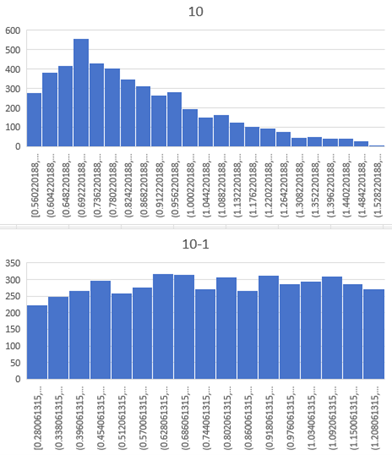
The study of Bayesian updating of truss structures using The Open System for Earthquake Engineering Simulation (OpenSees) can not only promote the application of Bayesian methods in structural engineering, but also provide a strong support for structural health monitoring in practical engineering. This paper proposes a method of Bayesian updating of truss structures using OpenSees to improve the accuracy of structural analysis and prediction. Based on OpenSees, a finite element model with a truss structure as an example is established, the basic parameters such as nodes, units, material properties and boundary conditions are defined, and the prior distributions of the initial parameters are set by empirical judgment. After collecting observational data such as structural response, Bayes' theorem is utilized to combine the a priori distribution with the observational data to update the parameter estimates. The posterior estimates of the parameters are obtained by constructing the likelihood function and applying the Monte Carlo method to sample from the posterior distribution. Numerical simulations are performed using the updated parameters, and the simulation results are compared with the observed data to verify the accuracy and reliability of the model. Finally, structural damage identification is performed based on the updated model. The methodology in this paper provides a systematic framework to dynamically update and optimize the truss structural model by continuously incorporating new data, significantly improving the prediction's accuracy and reliability.

 View pdf
View pdf


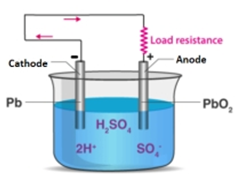
Environmental pollution and energy crisis have become the focus of global attention and urgent issues to be solved. To address these challenges, electric vehicles have emerged. Nowadays, some studies has gradually solved the problem of environmental pollution. However, these studies not note the performance issues with batteries. This article note the cruising range, the charging time and the Battery recycling and reuse technology. Thus the development of batteries will lead to a bright future.

 View pdf
View pdf


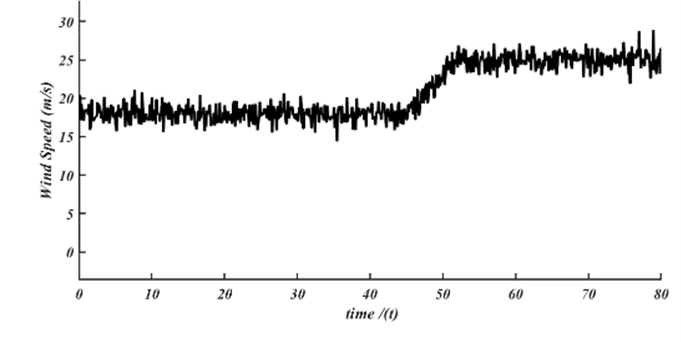
In wind power generation, the wind energy loss caused by yaw and other factors is as high as 50%, which directly leads to the difficulty of greatly improving The efficiency of wind power generating in producing electricity. The development of yaw control system restricts the progress of wind energy utilization, The purpose of this study is to investigate the application and influence of automatic steering of offshore wind turbines in practice. This paper proposes that the automatic yaw system of offshore wind turbine can improve the efficiency of wind power generation. The outcomes of the experiment demonstrate that the wind resources can be fully utilized and the power generation efficiency of the offshore fan can be improved by enabling the offshore fan to automatically turn according to the wind direction. The research has a certain value for the development of new energy power generation technology. In this paper, the method of Simulink simulation experiment is used to demonstrate that the yaw system can improve the wind energy utilization coefficient of offshore fan.

 View pdf
View pdf


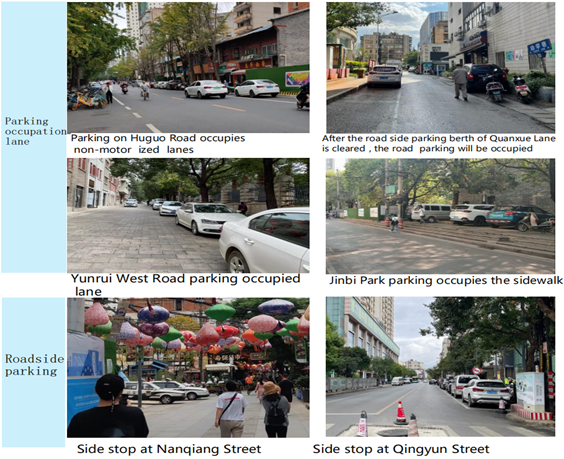
In the context of "dual-carbon", by reconstructing the relationship between people and vehicles, optimizing spatial quality, and taking street space renovation as a starting point, we can continuously improve the travel experience of human-centered neighborhoods, build a higher-quality living environment, and guide green travel. Under this context, this study takes Wuhua District, Kunming, Zhengyi Road and Sanshi Street as a case to explore the design of urban low-carbon green transportation demonstration area under the background of "dual-carbon". By analyzing the "dual-carbon" strategy and related policies, and taking into account the current transportation situation in Wuhua District, Kunming, it is found that there are problems such as traffic congestion, chaotic parking, and poor bus routes in this area. To address these challenges, this study proposes a series of optimization measures based on successful cases at home and abroad, including improving the transportation network, strengthening non-motorized parking management, introducing intelligent traffic management systems, and optimizing the connection between bus routes and rail transit. These measures will help improve transportation efficiency, reduce congestion, promote green travel, and provide useful lessons and references for the construction of low-carbon transportation demonstration zones in other cities.

 View pdf
View pdf


Shape-memory alloys (SMAs) are advanced engineering materials that have gained significant attention in recent years due to their unique properties and potential applications. SMAs have the remarkable ability to recover their original shape after deformation, making them invaluable in various fields, from biomedical devices to aerospace engineering. Despite their many advantages, SMAs also face several challenges, including the need for improved processing techniques and the development of more efficient actuation systems. To address these challenges, researchers have adopted various approaches, including using advanced fabrication methods and developing novel actuation systems. Recent research has yielded several notable achievements in the field of SMAs. For example, researchers have developed new processing techniques that allow the production of SMAs with improved properties, such as higher strength and better fatigue resistance. Additionally, researchers have developed new actuation systems that allow for more precise and efficient control of SMA behavior. Looking ahead, the future of SMAs looks promising. With continued research and development, SMAs have the potential to revolutionize various fields, from aerospace engineering to biomedical devices. However, further work is needed to overcome the remaining challenges and fully realize the potential of these remarkable materials. This article provides a comprehensive overview of SMAs, including their properties, fabrication methods, and various applications. It also discusses the challenges facing the field, the approaches to address them, and recent achievements.

 View pdf
View pdf


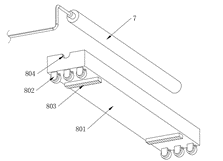
This paper addresses the issue of electric heating snow melting at tunnel, bridge, and culvert entrances. It explores a novel carpet-style electric heating snow melting and anti-icing system for these areas. The study analyzes the shortcomings of existing electric heating snow melting methods and proposes effective measures for improvement. To accurately assess the characteristics of current snow melting techniques, the research considers the damage caused by traditional snow melting methods to road structures and subsequent maintenance issues, while emphasizing energy-saving and environmentally friendly technologies. The snow melting process was simulated using Star-CCM+. The results show that the new carpet-style electric heating elements significantly improve snow melting efficiency. Preheating the road surface before snow accumulation greatly reduces snow retention time, enabling timely snow and ice removal. Typically, electric heating elements in snow melting systems are installed beneath the road surface at tunnel entrances. After installation, to protect the elements and ensure smoothness, a layer of cement or another suitable material is poured over them. However, these heating elements require regular inspection or replacement, which necessitates breaking up the road surface, increasing maintenance costs, and disrupting normal traffic operations. This study overcomes these challenges by providing significant convenience for installation and maintenance work, reducing costs, and minimizing the impact on traffic operations.

 View pdf
View pdf




